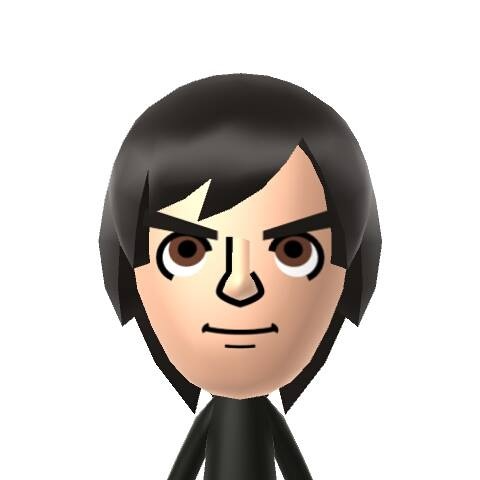Game Design for Creativity
Ever since I was a child, I’ve been privately studying and admiring one particular figure in game design: Shigeru Miyamoto of Nintendo. My own approach to game design has been shaped profoundly by the philosophy he embodies in his games.
I first encountered Miyamoto’s name when I was about six years old, while playing Pokémon Red on my Game Boy. Within the game, he appeared as my eternal rival, always one step ahead. I chose Charmander; he chose Squirtle. Over time, I ventured through worlds shaped by his design philosophy: Pokémon, Super Mario, Donkey Kong, and beyond. I collected and trained every Pokémon I could, trading and battling with friends through that nostalgic link cable. Whether Mario was jumping in 2D or 3D, I kept eating mushrooms, dying over and over, resurrecting, and saving Princess Peach. With Donkey Kong, I hurled barrels at reptilian foes, raced through jungles on a mine cart, and devoured bananas with abandon.
Growing up in a remote mountain village, I felt an inverse relationship between my dislike of school and my deepening love of Nintendo’s video games. While my grandparents and parents toiled in apple orchards, I played amid the forested hills. Somehow, Miyamoto’s games channeled a similar spirit of open-ended exploration—a sense of “playing in nature” that resonated with me.
Becoming an adult, I was stunned to learn that a single person had been involved in creating all the games that had enchanted me. I also discovered that “Satoshi” and “Shigeru”—the protagonists and rivals of Pokémon—were based on real individuals. That revelation led me to delve into Nintendo’s history, devouring everything from interviews in “Iwata Asks” to columns in Hobo Nikkan Itoi Shinbun. Connecting my childhood experiences to this mountain of information triggered countless insights.
Among the many aspects that set Miyamoto’s game design apart, I believe one stands out clearly: he harnesses creativity. When I play his games, I truly feel like I’m “playing.” His games became simulators for me to freely experiment, test new ideas, and satisfy my curiosity. By contrast, many other games I’ve played gave me the constant sensation of being “made to play”—as if I could only move forward by following rigid, preordained steps. It felt like someone else’s priorities were imposed on me, reminiscent of how a teacher sometimes forces a child to do things they don’t really care about. As a kid, I hated systems that placed adult convenience ahead of my own interests. I continue to reject any game design that kills creativity—and that sentiment hasn’t changed.
At their core, games are simulators, much like schools. A game design that embraces creativity allows players’ imaginations to flourish. Spending thousands—or tens of thousands—of hours in that simulated environment should ideally multiply, not stifle, creativity. The benefits of this enhanced creativity extend to real life in unmistakable ways.
I don’t claim to know all the details of how other countries structure their educational policies, but I can say that in Japan, the model often feels like “game design that kills creativity.” Too many children lose their innate creativity in school. For humanity—whose progress depends on inventing and using tools to solve countless challenges—losing creativity is tantamount to walking the path of extinction.
Objectively, Japan’s population is already declining at a rate of about one million people per year. No matter how we gloss over it, this is, in a sense, an ongoing extinction. Across society, we don’t yet have solutions that outpace the problems we’re creating. We endlessly debate issues but rarely resolve them. Whenever something new appears, the default reaction is to regulate or ban it. This pattern results from a shortage of creativity. Instead of harnessing resources and figuring out how to expand them, we resort to sequels and copycat ideas. A society where nobody dares to innovate is clearly unhealthy. This deficiency of creativity stems from “game design that kills creativity.” However, if creativity can be suppressed by design, it can also be unlocked by design.
I believe in the boundless potential of mobile apps. The mobility of these apps, in my view, hints at a futuristic, almost cosmic technology. That’s why I’m developing BrainDojo—a game designed to let you “gain more skills with less effort.” I plan to continually update its content, striving to make it a truly life-changing mobile experience.
One of my biggest goals is to help address the variety of societal challenges triggered by declining cognitive function. Research suggests that a few minutes per day of activities like basic arithmetic, handwriting, and even reading aloud can help keep the mind sharp. These activities have been linked to preventing dementia in seniors, reducing difficulties associated with developmental disorders, relieving stress, improving sleep quality, and promoting healthy brain development in children. Numerous studies point in this direction.
Small, simple habits can avert large, complex problems. A journey of a thousand miles begins with a single step. And the feature of “gaining more skills with less effort” can only be achieved through game design that embraces creativity. Inspired by Zen principles, I want to transform daily routines into engaging, joyful “practice.” I hope BrainDojo can serve as a stepping stone in that direction—for me, for you, and for anyone who seeks to cultivate their creativity through the simple act of play. BrainDojo is a lever to unlock your potential.
If you want to try BrainDojo, you can download it on the App Store.

